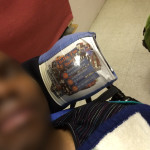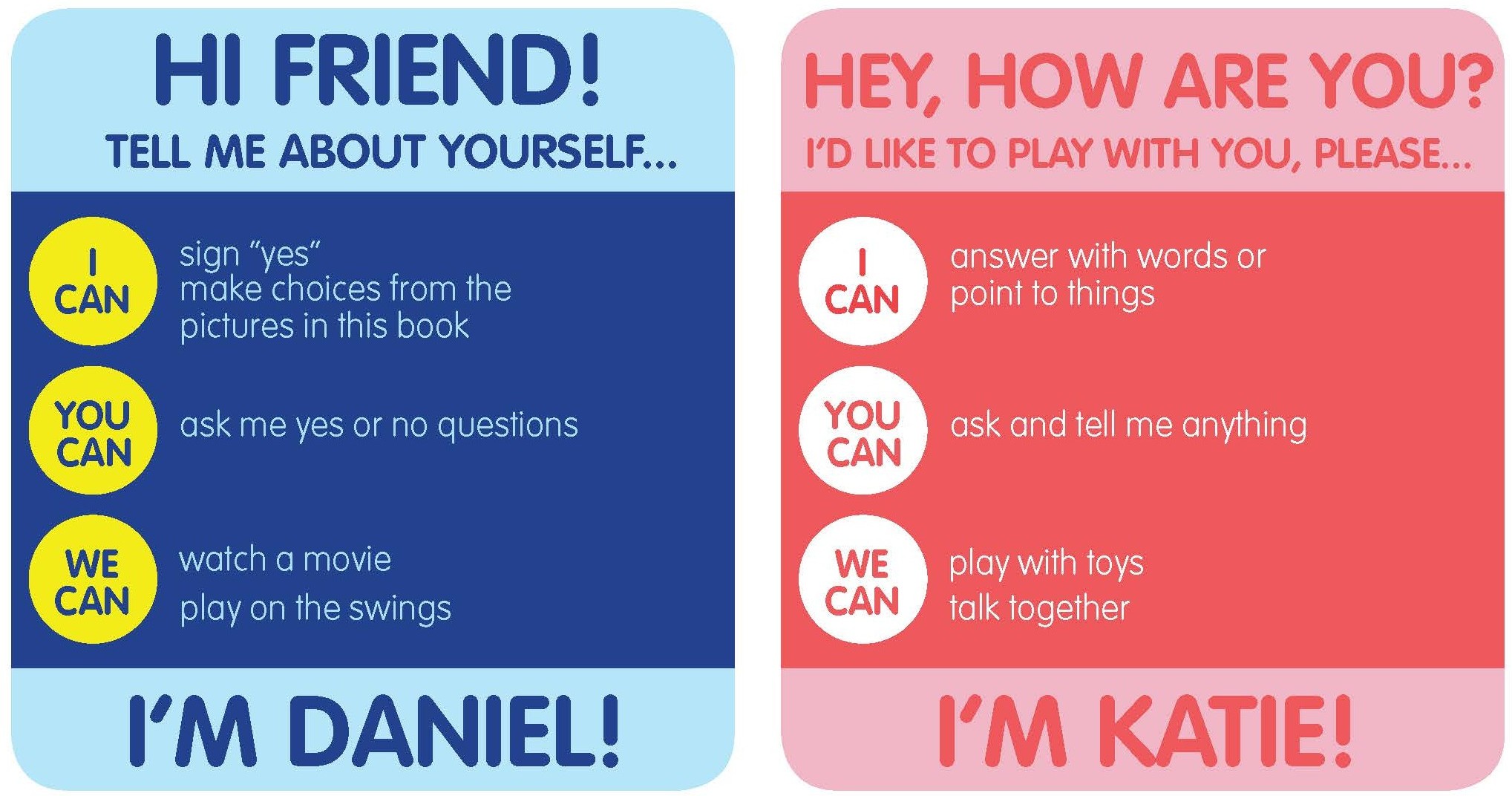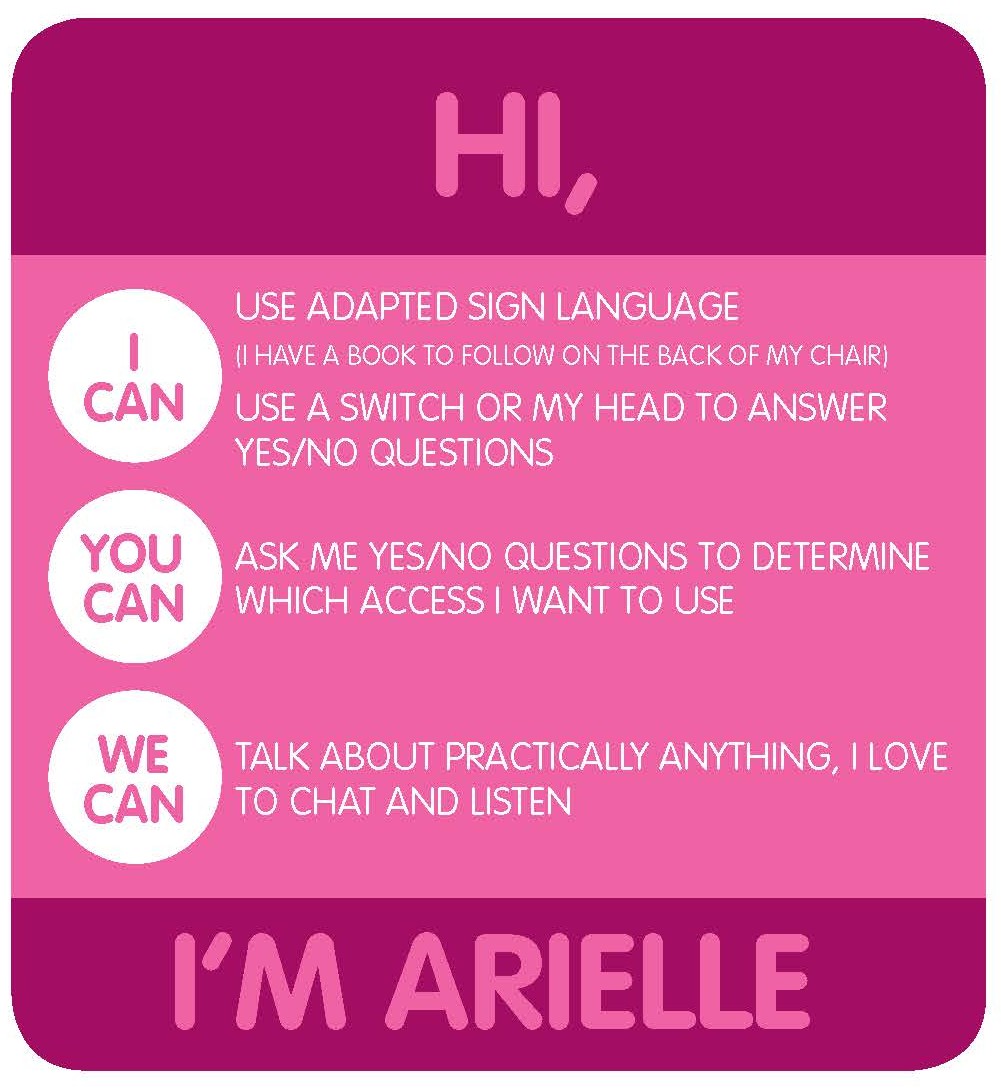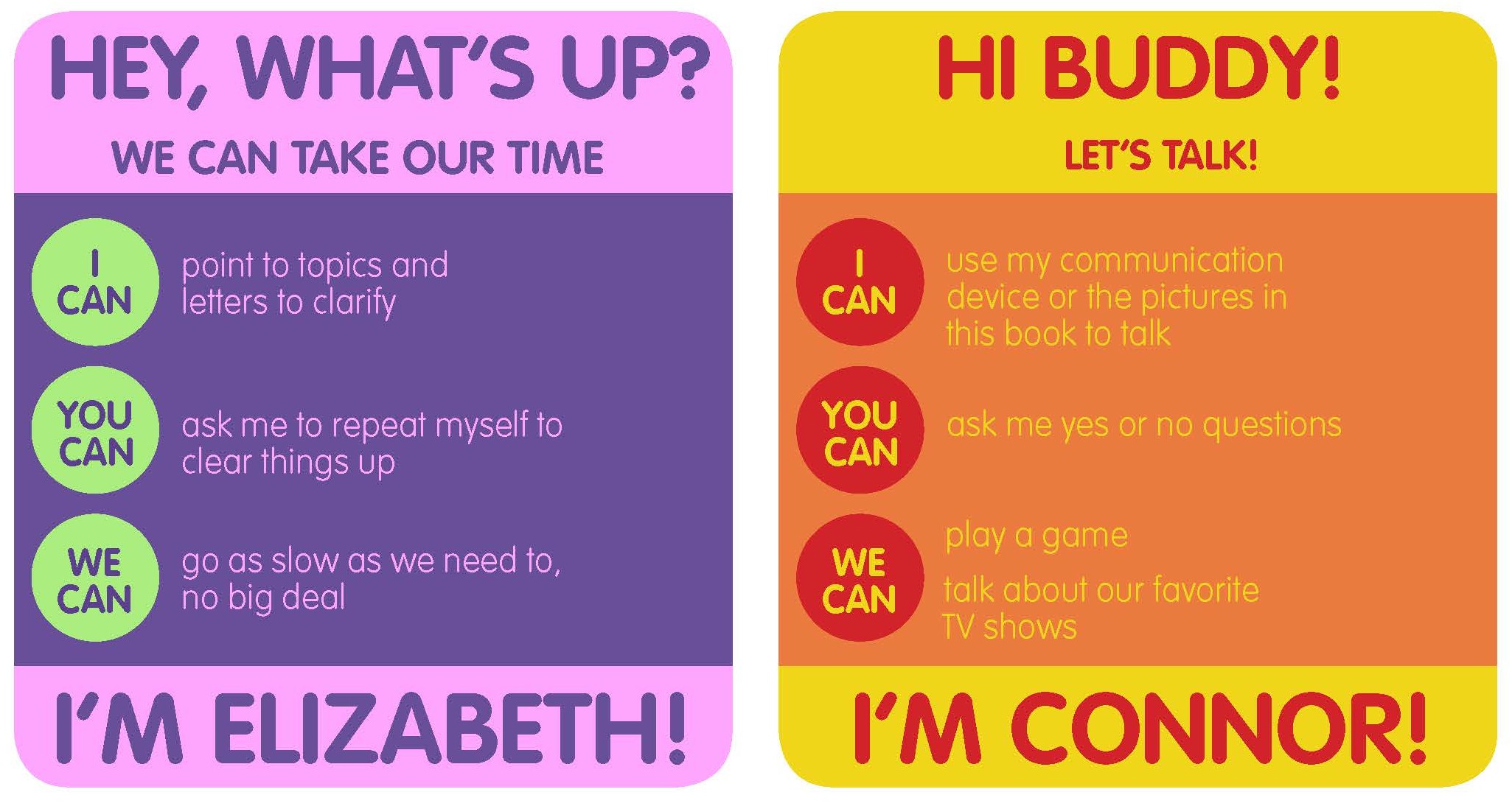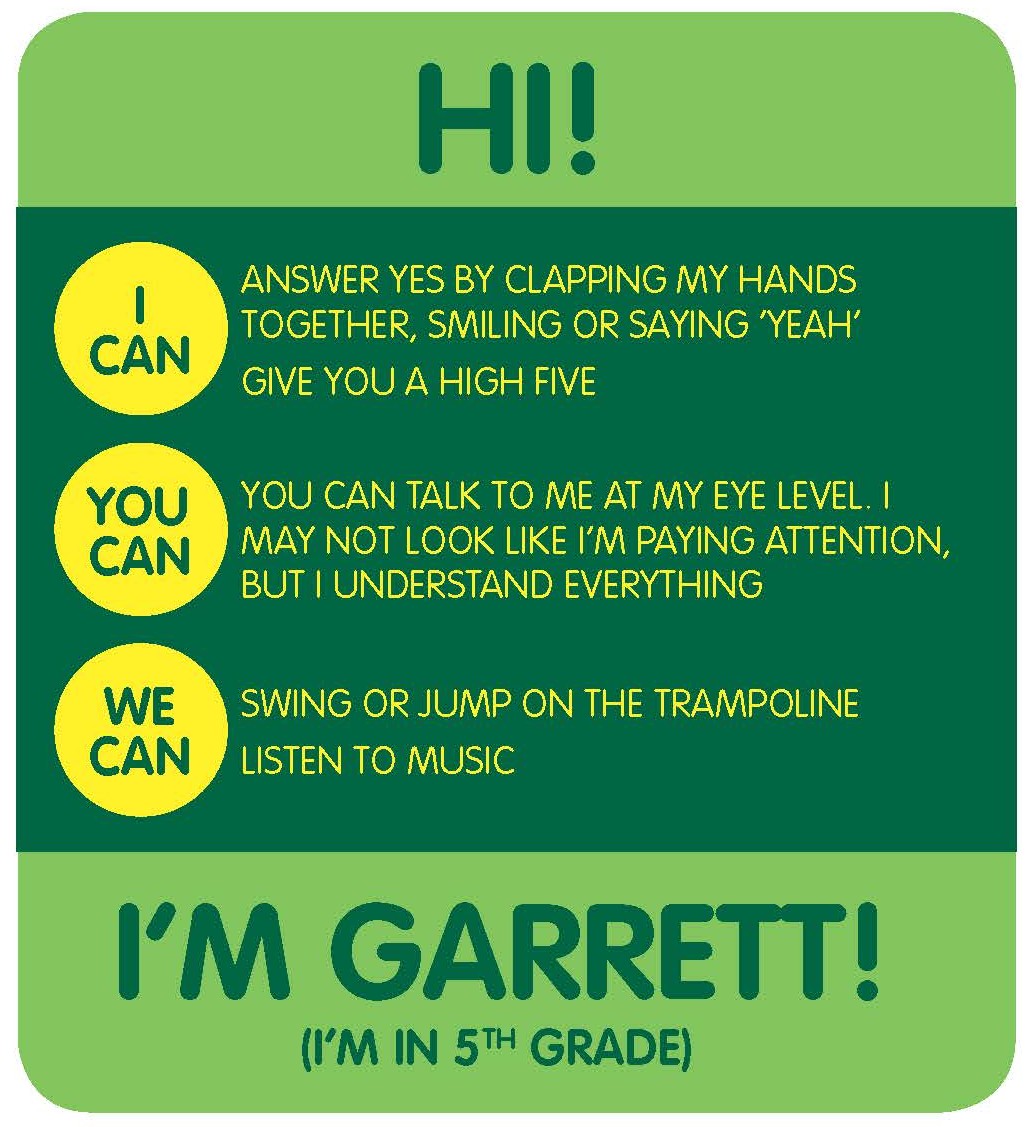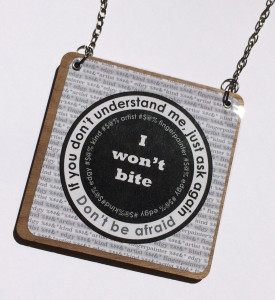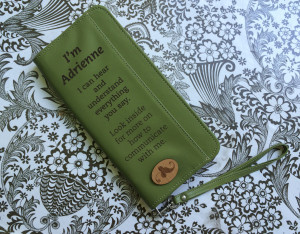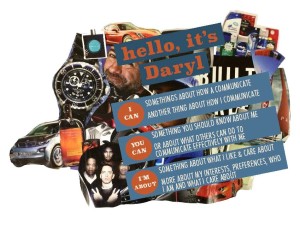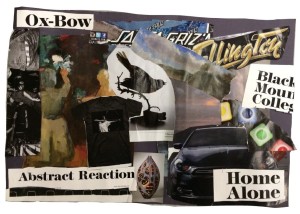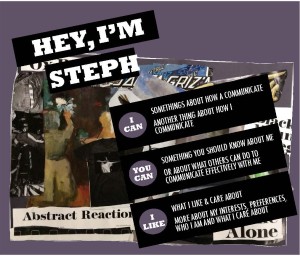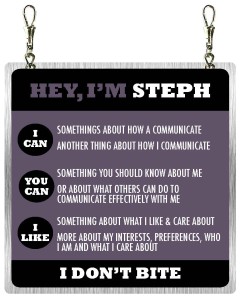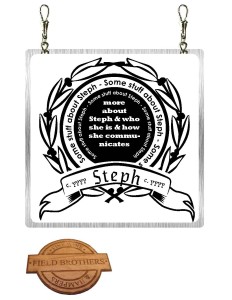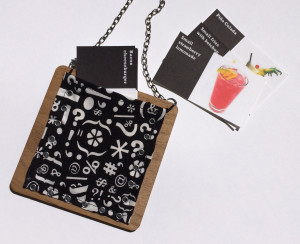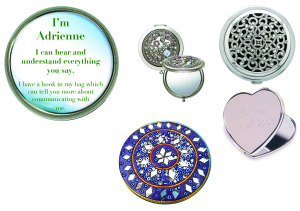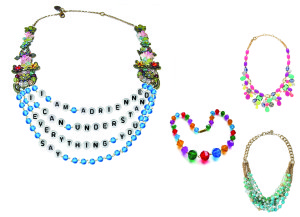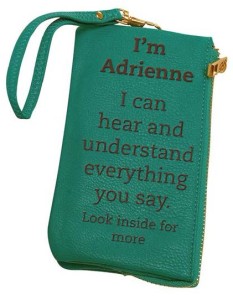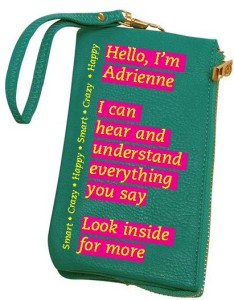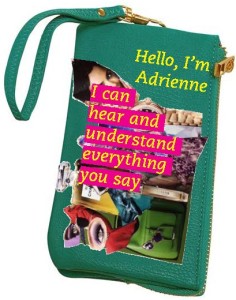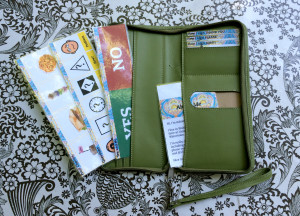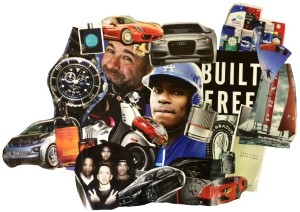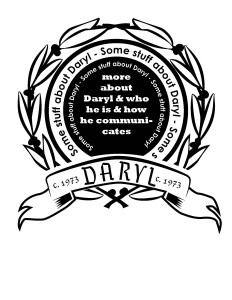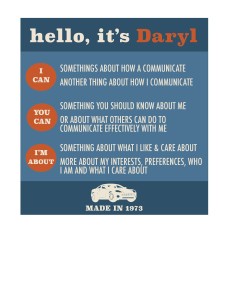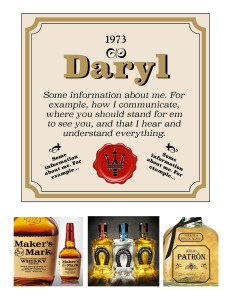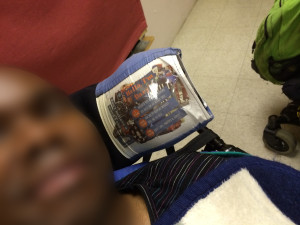— About This Project —
Hello Tags are simple tools for people with disabilities that impact communication to introduce themselves to others. They provide an opportunity to share aspects of their personality and the best strategies for successful communication. Most importantly, they are designed in collaboration with the person who will wear them, so they represent that person’s unique style and voice.
— Background —
When someone has a communication related disability strangers often misjudge or avoid them because they don’t know how to interact. This project grew out of the Inclusive Communication project, when I noticed how easy it was to miss important clues about how a person interacts. For example, there was a child named Daniel who used modified signs for yes and no, which none of his classmates were aware of. Kids in his class didn’t know how much of their communication he understood, or even expressed opinions about, simply because this information wasn’t available. These introductory name tags could help the person with a disability give others a sense of who they are and how to communicate with them successfully so they can expand their social circle and advocate for themselves in the community. Each person can create their own nametag by working with a caregiver to fill out a questionnaire that explains their communication needs and skills.
Initially, the designs were simple and standardized. When I shared them with children and their families, people were usually excited to adopt them. But, when the users were adults they were excited about what the name tags might be able to do, but didn’t seem excited to wear them. To explore this, I collaborated with a group of adults with disabilities in a dayhab program to design their own versions of this idea. Each adult was invited to think of me as their own personal designer, and come up with any artifact they want to wear or carry that would function to introduce them to new people. Each person worked with me to collage an inspiration board that reflected their personality and style. Based on the collages, I came up with a series of concepts for each person. They reviewed the ideas and selected what they liked, and we iterated until a final design was reached that each person was happy with.
— Designs —
Each client took their project in a very unique direction. It was exciting to see how the personality of each person shone through in their design. It’s rare, and important, for assistive technology to have the power of self-expression that these folks were able to channel in these pieces.
— Process —
For each client, you can see the progression from their collage through the finished piece. In addition to the collage, I had a series of conversations and interviews with each person where we dug deeper into how they want to be communicated with and what they want people to know about them. It is from those conversations that the text content of the pieces is derived.
Steph
Steph is a middle aged adult who uses a wheelchair for mobility. She uses her voice to communicate, but her speech can be very difficult to understand.
Steph’s collage:
Conceptual designs for Steph: Steph had a very punk or goth presentation, her favorite color is black and she has a very gruff demeanor. Despite all of this, she really wanted people to know she was “nice and kind.” She was also the most self conscious about the wearable aspect of this project, so her designs try to balance her edgy aesthetic with her warmth, and remain somewhat understated and private. A tricky balancing act for sure.
Final Artifact for Steph: Steph wanted people to know she was edgy, but that they didn’t actually need to be afraid of her. Her nametag combines practical advice, “if you don’t understand me, just ask again,” with the phrase “I won’t bite.” Steph felt this expressed her personality, and enabled her to express being approachable without losing her edge. She wanted a pocket in the back to carry some important phrases that were hard for her to say because her speech is hard to understand, including her favorite foods to order at fast food restaurants so she can hand the card to the cashiers instead of speaking.
Adrienne
Adrienne is an older adult who has had a physical and cognitive disability for her whole life. She doesn’t speak at all, but she does use her voice to vocalize assent and dissent, and she has a communication book that she is very adept at using to express herself. However, the book is bulky and can be hard to navigate for unfamiliar communication partners.
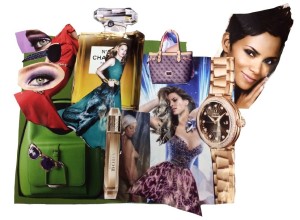
Conceptual Designs for Adrienne: Adrienne is into fashion, she has a very girly style and loves to accessorize. She already has some communication tools visible in her wheelchair, so she was especially open to the idea of wearing or displaying an artifact like this.
Final artifact for Adrienne: Adrienne wanted a wallet to hang on the handlebar of her wheelchair. She already carries a book with the phrase “I can hear and understand everything you say,” so we included that phrase here. he described herself as “happy, crazy, and not stupid.” Inside the wallet are a series of cards with the words and phrases she uses most often, and a brief introduction to who she is.
Daryl
Daryl is a middle aged adult who uses a reclining wheelchair for mobility. He uses his voice to speak, but his speech is very quiet and can be difficult to understand. He also has a brain injury which affects his memory and processing. Sometimes his speech is on topic and reliable, at other times it is much harder for him to communicate. For him the phrase, “Don’t believe everything I say,” served as a tongue in cheek way to acknowledge this unreliability.
Conceptual designs for Daryl: Daryl emphasized an interest in fast cars, partying, drinking and girls throughout all his interviews and through his collage. For him the designs were all intended to reflect that. He wanted his design to be a simple cardboard or fabric nametag attached to the headrest of his wheelchair next to his head. He had no qualms at all about wearing the nametag, nor about it being discrete.
Final artifact for Daryl: Unsurprisingly, none of my designs spoke for Daryl as well as his collage. We decided to use his collage as the foundation for his design.
